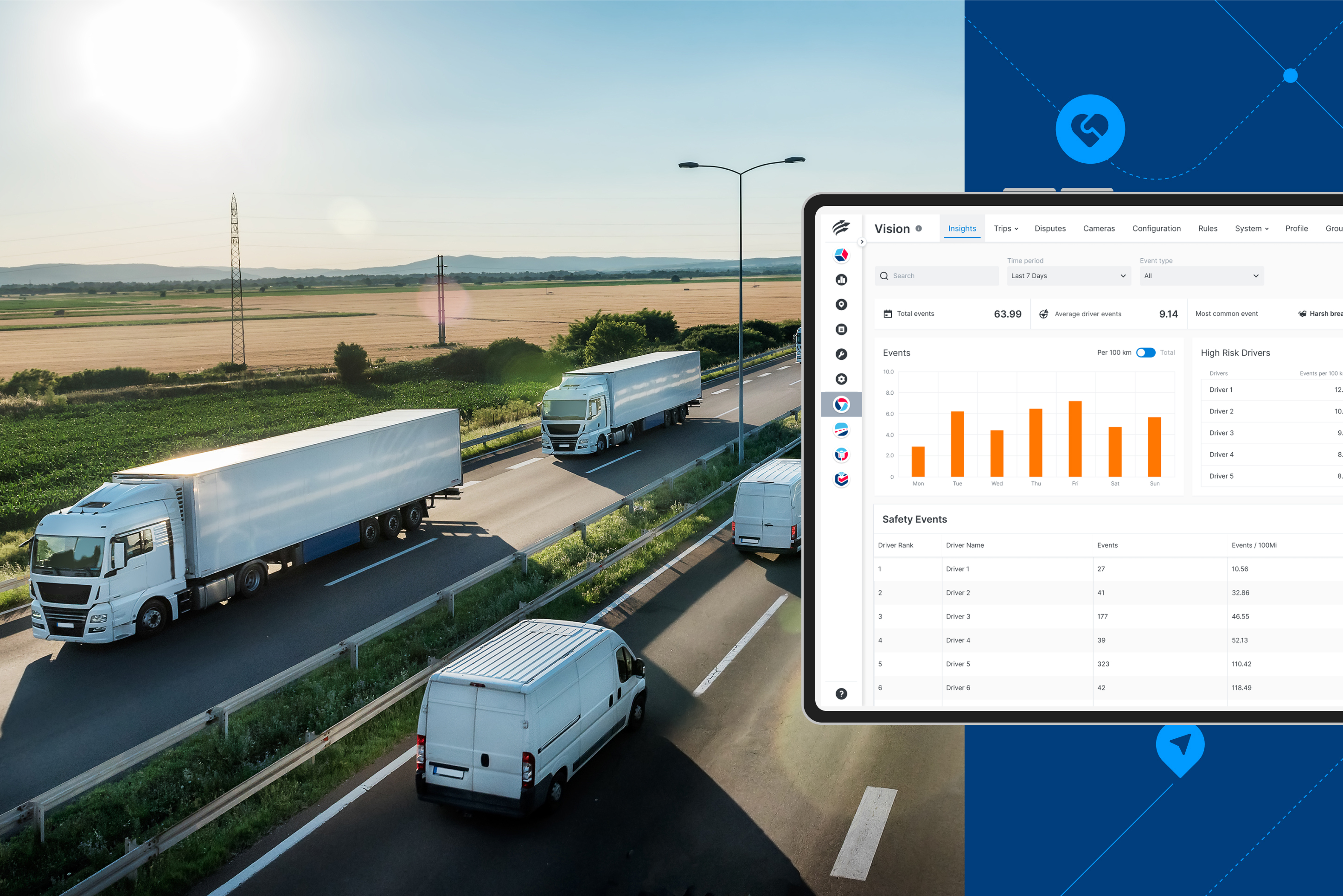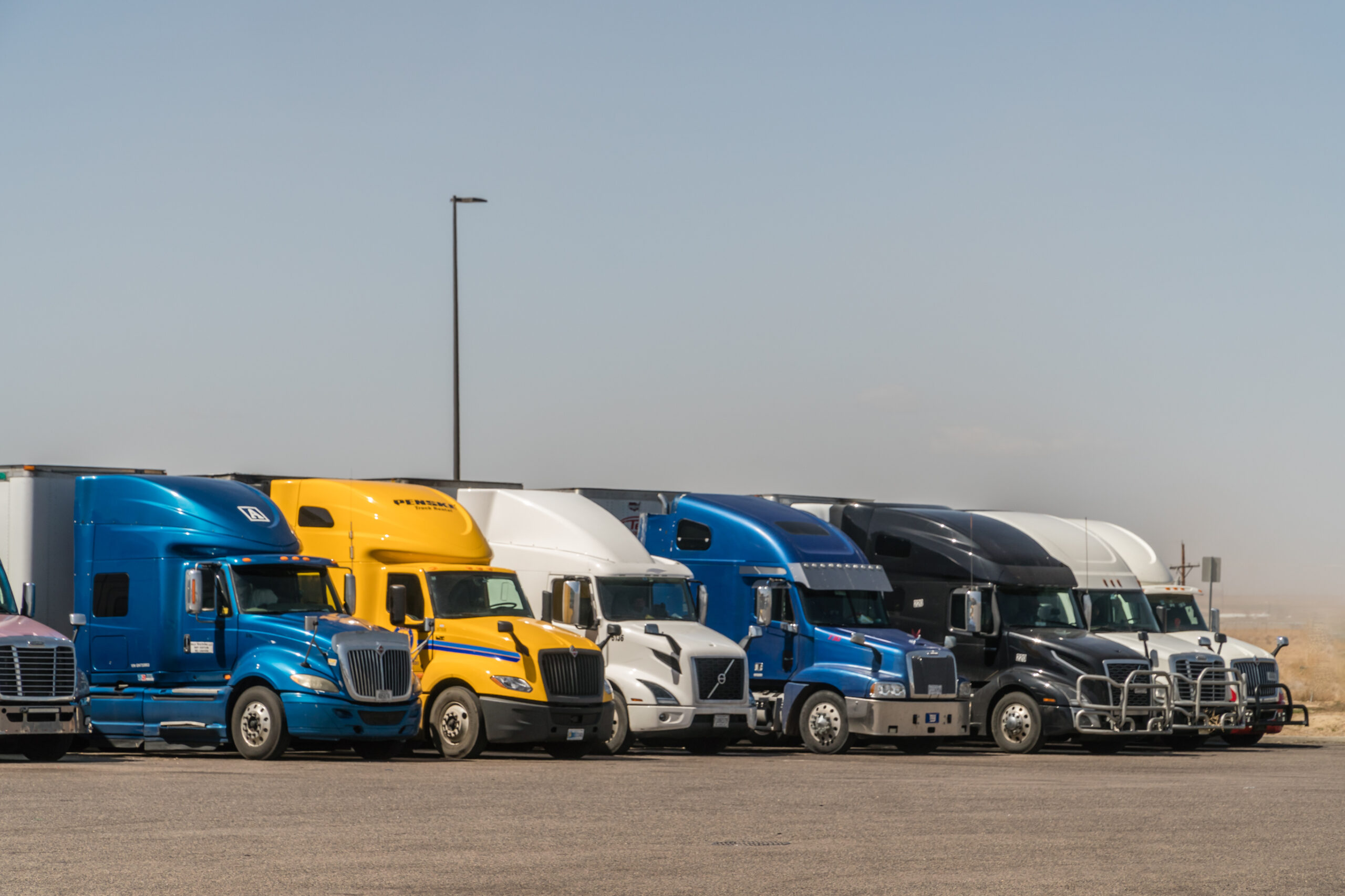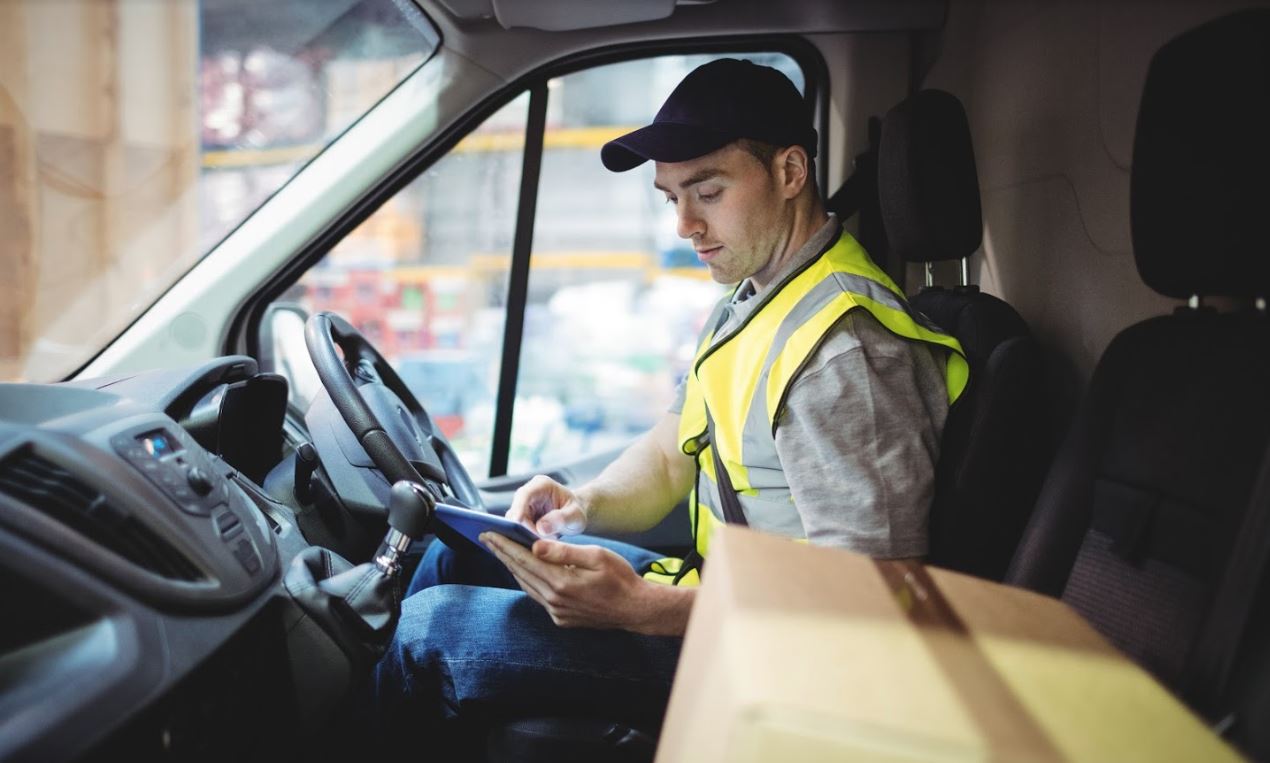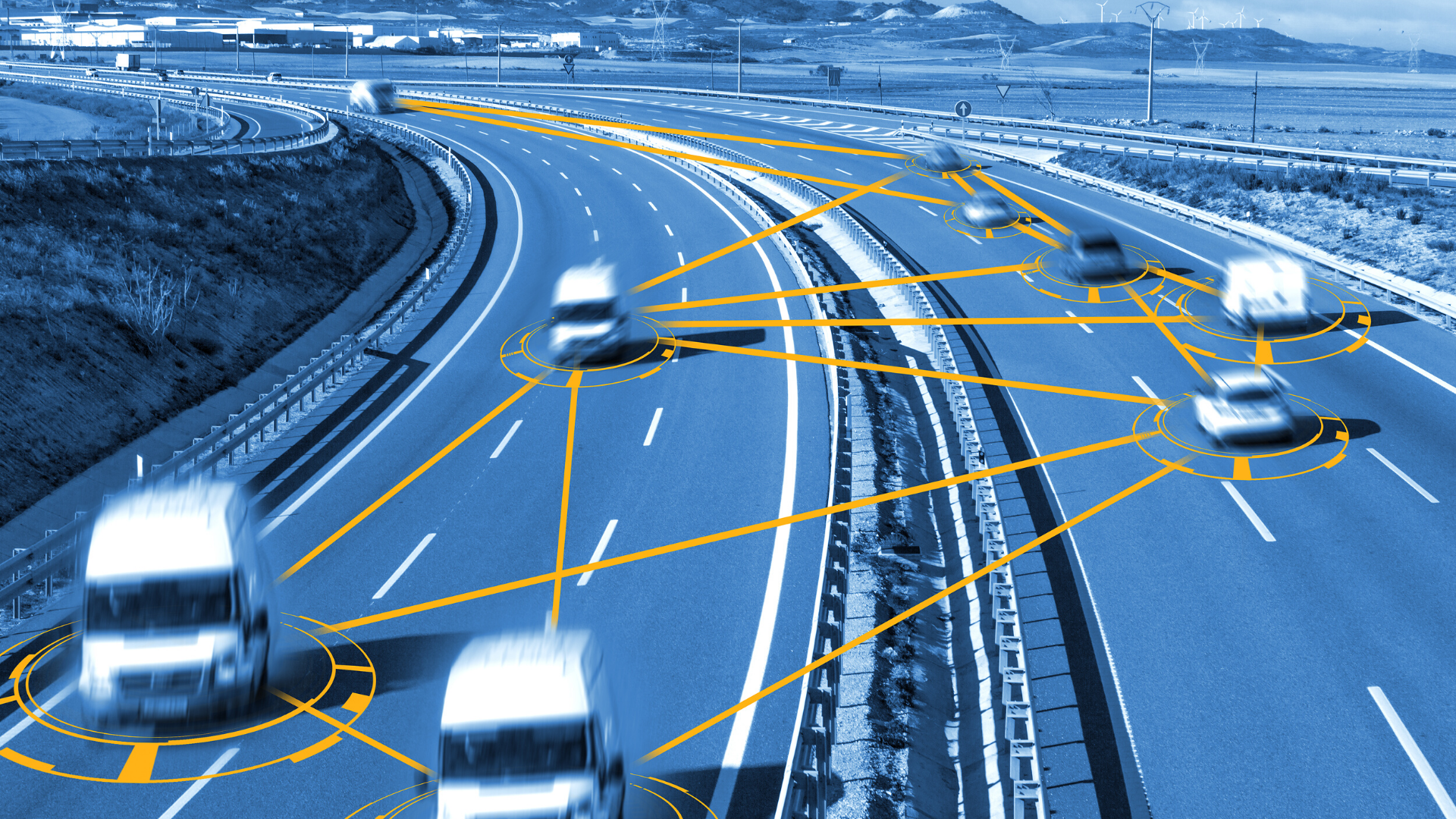Interconnectivity – or information exchange between different objects – is a concept that has been a buzzword for many tech-focused industries, including autonomous vehicles. It is a big part of the future of connected cars.
But what is it, exactly? How can it connect vehicles? Let’s dive in.
What is IoT & What Does It Mean for Fleets?
Equinix Senior Global Solutions Architect and early adopter of Connected Electric Vehicle (CEV) said, “Anytime a stand-alone object gets connected, it becomes part of the internet of things (IoT), and cars are no different. All of the interactions between a vehicle and the people, infrastructure, other vehicles, and partners it connects to represent data exchange in a digital ecosystem.”
The Internet of Things (IoT) is the interconnectivity of objects or “things,” which is managed through hardware, software, and sensors in conjunction with other technologies. These tools and devices work together through network communication and access to real-time data and processes. They allow users to analyze data to create and even predict business outcomes.
As this technology is applied to vehicles, IoT will play a significant role for fleets.
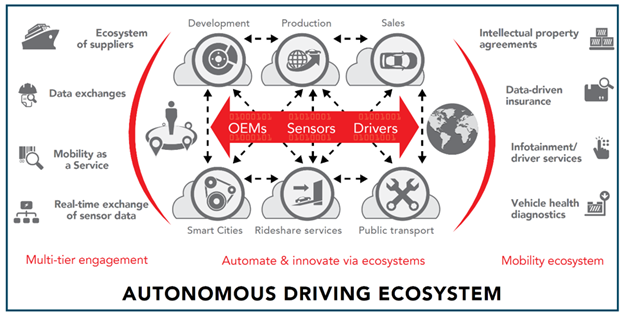
When this interconnectivity from IoT is applied to fleet management, companies can increase their competitive edge by taking automation to the next level and better understanding what happens to their business in real time.
What are Connected Vehicles & Their Associated Technology?
A connected vehicle is a car that can connect with devices, near or far, over wireless networks – a critical factor in the advancement of the IoT. The technology allows different “connected networks” to communicate with vehicles, such as other cars on the road, mobile phones, and even city crossroads.
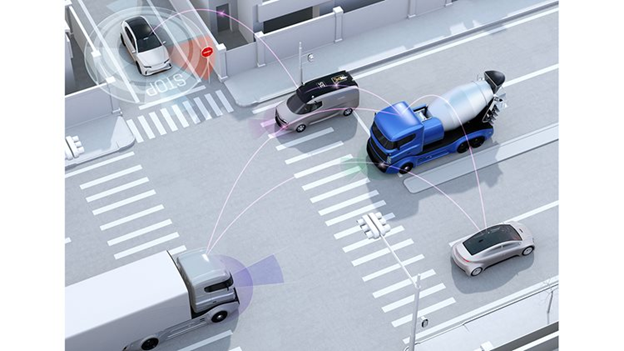
Our roads are gradually being adapted for the presence of connected vehicles, and people are adjusting to the idea.
In 2019, Walmart announced the rollout of its custom autonomous cargo vans, responsible for delivering groceries in Arizona. Similarly, Waymo, the self-driving unit of Alphabet, is continuously making progress with its driverless taxi service, expanding from Arizona to reach San Francisco. Waymo is on its way to increasing its market reach by partnering with Renault and Nissan to test connected vehicle technology beyond the States.
Given this, it is safe to say that connected vehicles are slowly paving the way for full automation.
Looking Ahead: How Can IoT and Connected Vehicles Play a Part in Fleets?
With the rise of IoT, projections are being made regarding the future of connected vehicles:
- IHS Automotive claimed that the number of actively connected cars roaming the global roads will hit 2 billion by 2025.
- According to Statista, the market for advanced driver assistance systems will grow to roughly 36 billion euros (US$43.3 million).
- It is predicted that about 70% of light-duty vehicles will be connected to the internet by 2023.
So, what does this mean for fleets?
Fleet management is perhaps one of the biggest beneficiaries of IoT and connected vehicles. Here’s how:
1. Technology for Faster Improvement
Vehicles – light- or heavy-duty – are already packed with sensors and technology. So, IoT will be critical in maximizing the use of the leading fleet management technologies, including GPS and OBD (on-board diagnostics). By leveraging these technologies, companies can effectively extract information from their fleet about routes, maintenance requirements, and driving conditions in real-time.
2. Seeing What’s Happening in Finer Detail
Businesses can gain insights by leveraging IoT data – like engine hours, engine diagnostics, speed, fuel spent and more – for compliance, fleet performance, and driver behavior. Managers gain objective and evidence-based information to support claims and address issues, allowing them to maintain client satisfaction and driver safety.
3. Faster Decision-Making in Real Time
Properly implemented IoT can allow fleet managers to use real-time resources that will allow them to make better-informed decisions on the go. Quick decision-making, especially when dealing with changing customer agendas or unexpected events in a chain of events, is crucial to reduce potential “speed bumps” that can affect deliverables and ultimately the business’ bottom line.
Small Steps: How Can Fleet Managers Prepare for IoT
Fleet managers can prepare by embracing IoT and considering it as an ally. With IoT in place, they will gain a more in-depth insight into the many different factors that concern their business, including greater visibility of what is happening with their fleet and comparing it against predictions or plans.
Telematics (which relies on the interconnectivity of different hardware and software, producing analytics) in fleet management will be bigger than ever, and managers who can adopt a proactive approach will be a step ahead.
Vehicle manufacturers, and even heavy equipment manufacturers, have realized that businesses comprise a significant percentage of their clientele. By building telematics hardware into their vehicles, manufacturers are able to offer solutions to the unique needs of businesses.
One of the biggest advantages of opting for OEM-embedded telematics-ready hardware is you can immediately use fleet management telematics upon your procurement of the new vehicles. Benefits include:
- Expedient implementation if your company has a long procurement process
- Saving time on compatibility testing
- The ability to plan your new fleet acquisition with telematics in mind
With factory-installed hardware, you can immediately subscribe to a telematics service from an aftermarket provider and start collecting and interpreting valuable data from your fleet vehicles without delay.
What Role Does Telematics Play in Fleet Management?
Fleet management refers to the applications and technologies used by businesses to maintain optimal use of their work vehicles. As fleet management solutions streamline many of the processes in the supply chain, companies can accept and do more business, thereby increasing their revenue.
With the ability to increase a fleet’s efficiency, fleet managers also use telematics to improve and plan future procedures. Since telematics provides valuable information about vehicles’ locations and assets, fleet managers can:
- Understand their operations at a more granular level
- Improve productivity and efficiency of drivers and managers
- Mitigate vehicle theft
- Enhance delivery estimates
- Provide better customer service
- Reduce expenses
How Can Fleet Managers Take Advantage of Telematics?
As telematics continues to be a critical component of fleet management and the transportation industry, investing in cloud-based fleet management software is vital for making use of available technology and getting the most out of your fleet.
Interconnectivity is not just a trend. Soon, it will become the norm – and those who embrace and understand its value will have a lot to gain.
Learn how our fleet management software can help your business take advantage of technology and improve your fleet’s efficiency by requesting our Powerfleet (formerly Fleet Complete) Demo.















